The Planting of the Holm Oak in Depth [Complete Guide]
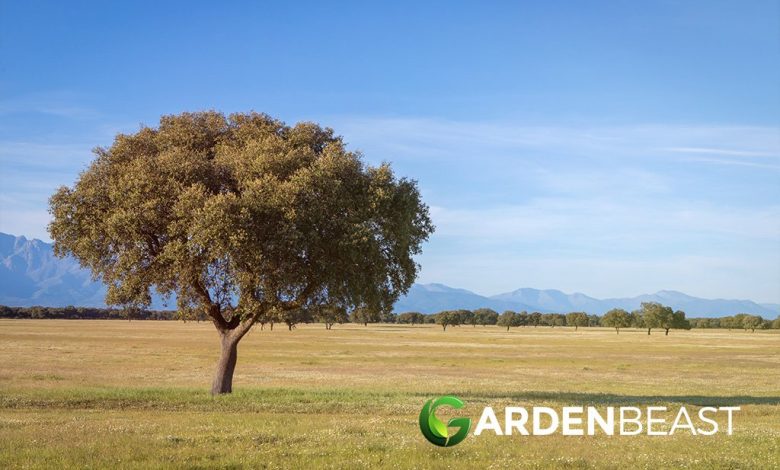
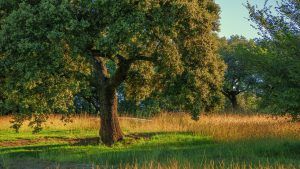 The oak is a species of tree widely used to repopulate spaces of land that have been left deserted for different reasons.
The oak is a species of tree widely used to repopulate spaces of land that have been left deserted for different reasons.
The acorns produced by the same plant are used to achieve this task, carrying out transplants when convenient.
It is a plant that tends to generate a very strong root system during its youth, which can complicate its manageability to some extent.
However, here we will give you all the guidelines you need to be successful in this task, even if you have not done it before, will you join us?
Important points when planting an oak
- When? in autumn.
- Where? In a large space in full sunlight.
- How do we prepare the land? Adding an element that helps drainage in case the soil is very compact.
- How should we water? Moderately.
- How often do you have to water? Twice a week in summer, without irrigation in rainy weather.
- What care do you need? Abundant sun when adult, pruning as needed, without fertilization.
- What pests and diseases does it have? Root rot.
When to plant an oak?
As the planting is done from the acorns that fall from the tree, autumn is the ideal time to get them to reproduce effectively.At this time, the acorn will create a very fast root that will keep the established plant in place through the winter.
Later, in spring, with the arrival of good sunlight and a warmer environment, it will begin to grow towards the surface.
Where to plant an oak?
The place where the oak will be planted is the first point that you should consider in detail because it is a species that grows a lot and will need space.
Under this premise, you should not only take into account the height that it will reach when it is an adult tree, but also the complex root system. Therefore, select a wide space, away from other species.
How to prepare the land?
The ideal land for planting the oak should be very porous so that it does not retain moisture to prevent the root from rotting.When the soil that is available is very compact, it will be necessary to carry out an adaptation work incorporating sand.
The oak does not need many nutrients to grow and special care must be taken with excess nitrogen.
How do we water the oak?
The irrigation of the oak must be carried out moderately, without flooding the soil. In general, when the rainy season arrives, irrigation becomes unnecessary since the amount received naturally will be more than enough.
How often do we water the oak?
Irrigation should be carried out more constantly during the first years of life, twice a week if it is very hot.The rest of the year, except when it is rainy, once a week will suffice.
How to plant an oak step by step?
The planting of the oaks is done from the acorns produced by the tree, so the process will start from there.
- Collect the acorns that fall from the tree without letting them spend too much time outside. To select the best ones, you have to submerge them in a bowl with running water and those that sink quickly will be the ideal ones. This step also helps them hydrate and promote root formation more quickly.
- Plant the selected acorn in a large and deep pot to help it develop well without being damaged by rodent attacks.
- When carrying out the transplant of the young plant, it is essential to prune the roots that it has generated during the sowing time . This action will help to better manipulate the plant and will also allow it to adapt more easily to the new space. It is necessary to know that later it will grow slowly because it will concentrate its energies on restoring its root system. This step will be executed at the end of summer.
- Dig a wide but not too deep hole to comfortably place the oak with its roots . Make sure the plant sits flush to the ground with the root line to prevent drowning.
- Fill in the gaps with soil and press down lightly to ensure it sits well.
- Add a layer of mulch to help keep the roots warm and conserve moisture.
What care does the oak need?
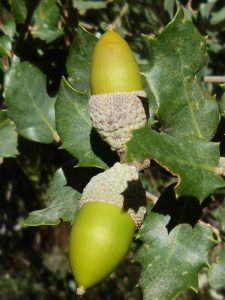 The oak needs abundant sunlight during its adulthood, although when it is in the growth period it is normal for it to prefer semi-shade.
The oak needs abundant sunlight during its adulthood, although when it is in the growth period it is normal for it to prefer semi-shade.
Pruning can be applied intensively if you expect to give the tree a specific use , but it is also possible to keep it growing at will.
In case you decide to apply a pruning, the appropriate time to achieve the best results is during the winter.
Of course, light pruning should be administered if applied successively on an annual basis, since the trees need to rest to recover if a very strong pruning has been done.
On the other hand, fertilization is not a mandatory issue because excess nitrogen can alter the natural growth rate of the plant.The ideal is to allow it to take advantage of what it gets from the soil, only making a minimal intervention in case it is excessively poor.
What pests and diseases affect the oak?
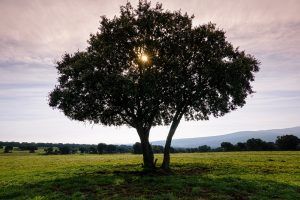 The oak is exposed to the attack of different diseases that are produced from certain fungi. Irrigation and poor soil drainage are more than enough conditions for root rot to occur.
The oak is exposed to the attack of different diseases that are produced from certain fungi. Irrigation and poor soil drainage are more than enough conditions for root rot to occur.
It is also possible that dry leaves and wounds in the stem of the tree are generated.These symptoms can start from having bad conditions in the environment, for example a very high relative humidity.
With the use of systemic fungicides and the choice of healthy soil, the chances of suffering this damage are significantly reduced.Holm oaks help a lot to protect the soil and that is why they are the favorites to repopulate.
In addition, they are also useful as a food source, for use in carpentry, among others.And having a specimen in a garden will be a very comfortable way to have shade throughout the year.
The oak is a large, strong and solid tree that has a high longevity and a level of resistance to planting conditions.
It can stay alive in more or less dry spaces, although it is usually planted more frequently in meeting places, due to the shade it offers.
Being a perennial type tree, it greatly improves the shade potential that it gives us throughout the year.
And it can be affected by possible pests or diseases, so you have to pay close attention to fight them. Do you want to know what they are?
the dry
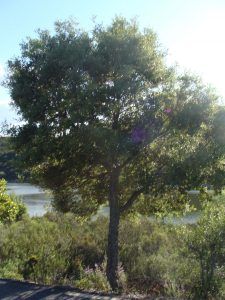 It is a more or less common disease in oaks that produces effects on the crown, as if it were losing its leaves due to drought, hence its name.
It is a more or less common disease in oaks that produces effects on the crown, as if it were losing its leaves due to drought, hence its name.
Its action is progressive, which causes the oak to deteriorate its structure with the passing of days, and it is possible that it will die.
Although it is a disease that can respond to multiple factors, it is generally associated with the presence of a fungus that has been called phytophthora.
This enters through the roots, rotting them in the first instance, so the plant becomes unable to carry out its processes. These involve both the work of breathing and the exchange of nutrients.
Yes, they are the same effects that occur due to death or root rot, as it is known in other types of plants.The presence of the fungus responds to an excessive accumulation of water at the base of the plant, which becomes recurrent and does not improve with days.
It may be due to poor irrigation practice, but due to the conditions of the oak, it is more common to occur after floods or continuous rains.
Being a disease that comes from the roots and that manifests itself in the aerial part as it is very advanced, it is necessary to work on prevention. This means applying appropriate irrigation measures, in addition to planting the oaks in substrates with an excellent drainage system.
The most advisable thing is to complement the normal garden soil with river sand, which helps a lot in this task.
Eriophyes Ilicis
It is a mite that affects holm oak leaves with a certain amount of frequency, appearing with brown spots on the underside.
The spots are not smooth but are shown with a kind of elevations that are easy to feel by touch.
Being a microscopic species, it is very difficult to realize that it is in the plant, which can extend the time to diagnose it.
The eriophyes ilicis mite also causes galls that it creates in the structure where its young live and feed on the inside of the plant to develop.
The good news is that it’s not especially deadly to the tree that’s resisting it if it’s healthy and has enough nutrients. To combat it, apply an appropriate acaricide according to the manufacturer’s recommendations and in a short time you will be able to see your specimen free of these disturbances.
Cerambyx
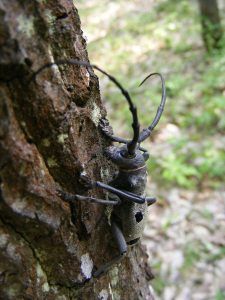 It is a beetle that lives in the oaks and steals the energies of its structure, especially in the larval stage.
It is a beetle that lives in the oaks and steals the energies of its structure, especially in the larval stage.
It is capable of reproducing very quickly and in large numbers, so if it is not controlled it could end the life of a tree.
To lay its eggs, it creates galleries in the bark where it leaves them from time to time.This condition detracts from the vitality of the structure, which, being such a wide and heavy crown, is deadly.
In case of detecting that the attack is the product of this type of plague, it is necessary to prune the affected areas and burn them, in order to eliminate the larvae that are housed in the internal part.
It is also possible to use a cotton with insecticide that you will have to tie to a wire to introduce in the galleries that are easily accessible. This will not only remove a certain amount of larvae that adhere to the cotton, but you will also leave the humidity of the insecticide in the way.
But it is important not to leave that hole open, but to seal it with some healing paste, this way you will prevent them from escaping and going to other spaces.
cottony mealybugs
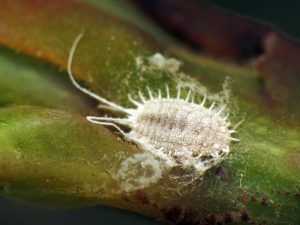
Very frequent pests and no less complicated to deal with because they are capable of affecting your oaks in three ways.
The first occurs due to the suction of the plant’s sap, which causes a general weakening of the entire structure because it steals energy.
In addition to that, the cochineal expels a kind of molasses where it travels, leaving it scattered on leaves and branches.
This molasses is sweet, so it is attractive to another series of pests, such as ants, which are capable of establishing their nests in the structure.
And, in addition, it is very likely that the fungus known as bold also uses it to enter the plant and cause that black powder that is so annoying. The cochineal also produces a cottony coating on the stems, especially white, making it more or less easy to detect and not confuse.
To finish checking if it is her, you can look at the back of the leaves, as they are usually grouped there. You can treat it with home techniques, applying a pressurized water injection on the leaves to eliminate them.
If your oak is young, you can also clean the leaves with a mixture of potassium soap and water, or alternatively with neem oil.
Holm oaks are large trees that take time to reach these dimensions and, therefore, fill us with emotion when we have them. This implies that any damage puts a weight on the head of concern to prevent them from suffering and, worse yet, ending up dying.
Faced with this possibility, it is best to stay informed and anticipate what could happen, having first-hand information. Information that we have given you here and that you can use whenever you like, so do not lose sight of it.
How long does an oak live?
The oak has a high level of longevity. Their life expectancy amounts to a thousand years.
How long does it take to grow an oak?
It grows very slowly and a specimen of good height will not be evident until it reaches approximately 20 years.
How long does it take to produce fruit?
It takes a long time, so you need to be patient. On average this could be up to 40 years for the first acorn.
Can it be grown in a pot?
It is not a good plan to have a potted oak, because although the superficial part grows slowly, its root system does not and in a short time it can suffocate.
How many times does an oak produce fruit?
It can give one to two harvests per season, as long as it is planted in ideal conditions.
In addition, it does not generate a constant production year after year. One is capable of giving a great production and the following decreases.
Should an oak be pollinated to obtain fruit?
Pollination is anemophilous type. It means that there is no need to work around this issue because the wind takes care of everything.
How cold can an oak tolerate?
It is able to tolerate cold and eventual frost, but it is better if it is kept above 8° C in winter.
How many oaks can be planted per hectare?
The average is calculated at around 300 holm oak specimens per hectare.
What type of fertilizer does an oak need?
You have to work with organic fertilizers with a high nitrogen content such as compost and decomposed manure.
How much heat and/or drought can an oak tolerate?
Live peacefully in environments with Mediterranean climates that reach temperatures above 35° C in summer.
Drought doesn’t do well.
Bibliographic references
- The pathology of the holm oak (Quercus ilex L.) in Spain, ARCC de Zoología, PFE Forestal – marm.es
- Pathogenicity of Phytophthora spp. root rot causes of Quercus ilex ssp. ballota in forest nurseries, ME Sánchez, S Andicoberry, A Trapero – Bol. San. Veg.Pests, 2004 – miteco.gob.es
- Effect of nursery inoculation with Phytophthora cinnamomi Rands. in oak plants (Quercus ilex L.), R Tapias, M Fernández, RL Salvador – Forest Congresses, 2005 – uhu.es
- Population variability in oak (quercus ilex subsp. Ballota (Desf.) Samp.): morphometry, near-infrared spectroscopy and proteomics, J Valero-Galván – 2012 – helvia.uco.es
- Influence of moisture content and storage time on germination capacity in holm oak acorns (Quercus ilex subsp. Ballota L.) …, MJ Aroca, R Serrada, CC Guer – Forest Congresses, 2005 – researchgate.net
- Implication of Phytophthora cinnamomi Rands in the «dry» disease of oaks and cork oaks, JJ Tuset, C Hinarejos, JL Mira… – … plant health. Pests., 1996 – redivia.gva.es
Maybe you are also interested in:
- Holly: [Cultivation, Irrigation, Care, Pests and Diseases]
- Acer Campestre: [Cultivation, Irrigation, Associations, Pests and Diseases]
- Acerola: [Cultivation, Irrigation, Care, Pests and Diseases]
- Albizia Julibrissin: [Cultivation, Irrigation, Associations, Pests and Diseases]
- Albizia: [Characteristics, Cultivation, Care and Disadvantages]
- Carob tree: [Cultivation, Irrigation, Care, Pests and Diseases]
- Hackberry or Lidonero: [Planting, Care, Irrigation, Substrate, Problems]
- Hackberry: [Cultivation, Irrigation, Care, Pests and Diseases]
- Brachychiton Tree: [Planting, Care, Watering, Substrate]
- Pomegranate Tree: [Cultivation, Care, Irrigation, Substrate, Pests and Diseases]
- Jupiter Tree: [Cultivation, Irrigation, Care, Pests and Diseases]
- Silk Tree: [Characteristics, Cultivation, Care and Disadvantages]
- Marula Tree: [Planting, Care, Harvest, Irrigation and Characteristics]
- Quince Tree: [Care, Planting, Irrigation, Substrate and Pests]
- Tipuana Tree: [Planting, Care, Irrigation, Pruning, Pests]
- Tree of Love: [Cultivation, Irrigation, Care, Pests and Diseases]
- Paradise Tree: [Planting, Care, Irrigation, Substrate and Pests]
- Red Maple: [Crop, Associations, Pests and Diseases]
- Bella Sombra: [Cultivation, Irrigation, Care, Pests and Diseases]
- Boldos: [Cultivation, Irrigation, Care, Pests and Diseases]
- Bonsai: [Characteristics, Utility, Types, Meaning and Purchase]
- Budleia: [Cultivation, Irrigation, Care, Pests and Diseases]
- Buxus: [Characteristics, Cultivation, Care and Disadvantages]
- Cabrahigo: [Characteristics, Cultivation, Care, Pests and Diseases]
- Callistemon Citrinus: [Characteristics, Cultivation, Care, Pests and Diseases]
- Starfruit: [Cultivation, Irrigation, Care, Pests and Diseases]
- Horse Chestnut: [Crop, Associations, Pests and Diseases]
- Casuarina: [Cultivation, Care, Pests and Diseases]
- Cedar of Lebanon: [Cultivation, Care, Pests and Diseases]
- Ceibo: [Cultivation, Irrigation, Care, Pests and Diseases]
- Chamaecyparis Lawsoniana: [Cultivation, Care, Pests and Diseases]
- Chamaecyparis: [Cultivation, Associations, Pests and Diseases]
- Canadian Poplar: [Cultivation, Irrigation, Care, Pests and Diseases]
- Black poplar: [Cultivation, Irrigation, Care, Pests and Diseases]
- Citrus: [Cultivation, Fertilizer, Care, Irrigation, Pests and Diseases]
- How to Plant a Bonsai: [Steps, Growth, Care and Cuttings]
- How to Plant a Lemon Tree: Complete Guide with Images and Steps to Follow
- How to Plant Jujube: [Complete Guide]
- How to Plant Bamboo: Guide that includes [17 Steps + Images]
- How to Plant Boxwood: Complete Guide [Images + Step by Step]
- How to Plant Cinnamon: [All Steps] + Complete Guide
- How to Plant Macadamia Nut in [8 Steps + Images]
- How to Plant Pistachios Step by Step: [Guide + Images]
- How to Plant a Custard Apple Tree: [Complete Step-by-Step Guide]
- How to Plant a Kiwi Tree: Steps to Follow [Images and Much More]
- How to Plant a Mimosa Tree: [Complete Guide + Step by Step]
- How to Plant a Hazelnut and Harvest Your Own Hazelnuts: [Complete Guide]
- How to Plant a Cactus: Step by Step Manual [12 Steps + Images]
- How to Plant a Ficus: [Complete Guide to Planting this Tree]
- How to Plant an Olive Tree Step by Step: [Complete Guide + Images]
- How to Plant a Weeping Willow: [Complete Guide + Images]
- How to Plant Blackberry: Complete Guide [Images + Steps to Follow]
- Cut Trees: [Methods and Guide to Cut Down a Tree]
- Durillo: [Cultivation, Irrigation, Care, Pests and Diseases]
- Holly: [Planting, Care, Irrigation, Substrate, Pests and Diseases]
- The Acacia Tree: [Characteristics, Planting, Care, Irrigation and Substrate]
- The Beech Tree: [Cultivation, Care, Irrigation, Pests and Diseases]
- The Jacaranda Tree: [Characteristics, Planting, Care, Irrigation and Substrate]

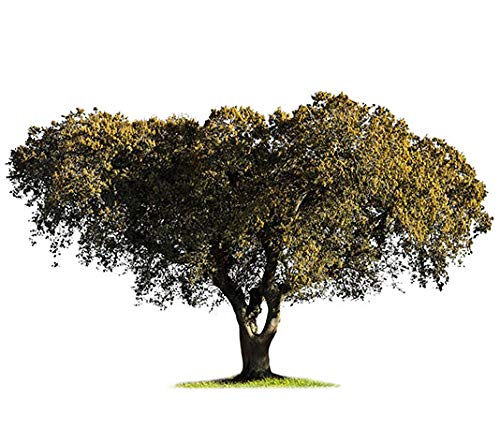


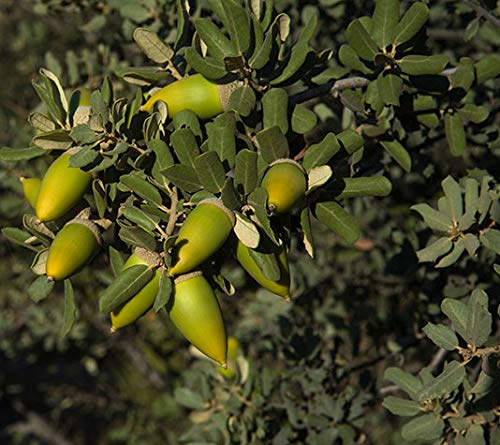
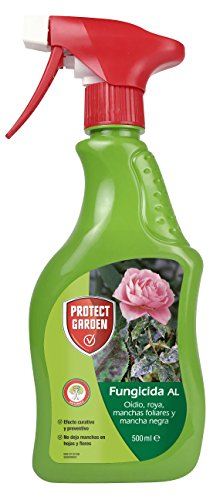
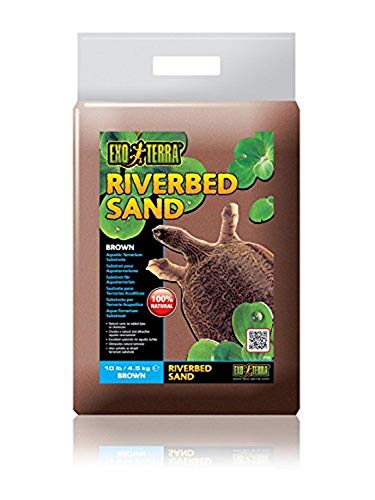
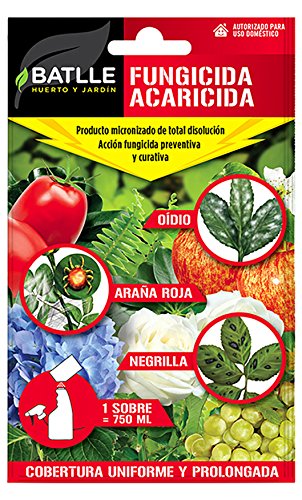
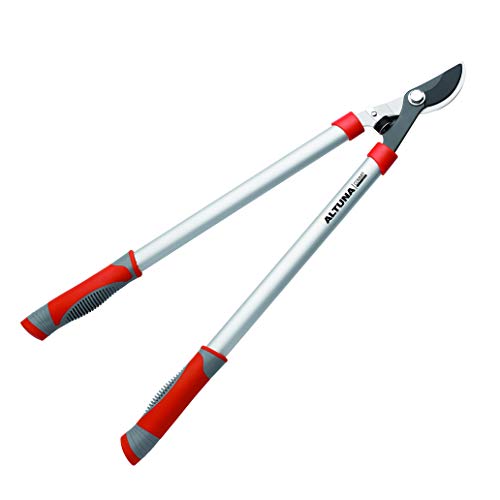
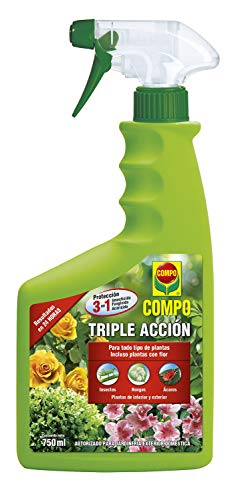


![Photo of Complete Guide to Grow Moringa: [Steps to Follow + Images]](https://www.complete-gardening.com/wp-content/uploads/2022/08/complete-guide-to-grow-moringa-steps-to-follow-images-390x220.jpg)
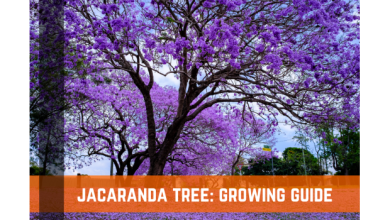
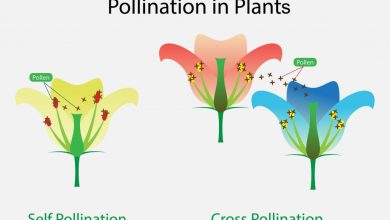
![Photo of Prune Fig Trees: [Importance, Season, Tools, Considerations and Steps]](https://www.complete-gardening.com/wp-content/uploads/2022/08/prune-fig-trees-importance-season-tools-considerations-and-steps-390x220.jpg)